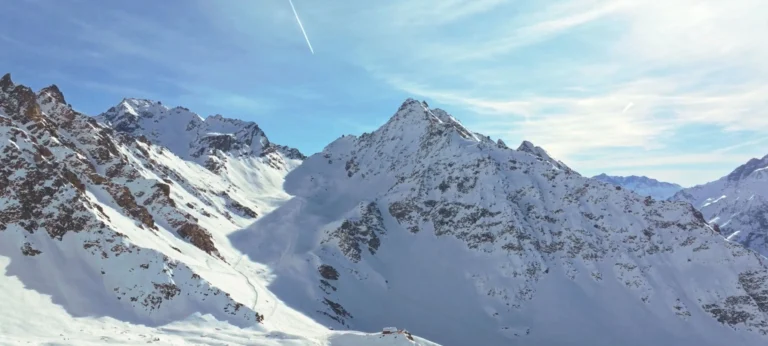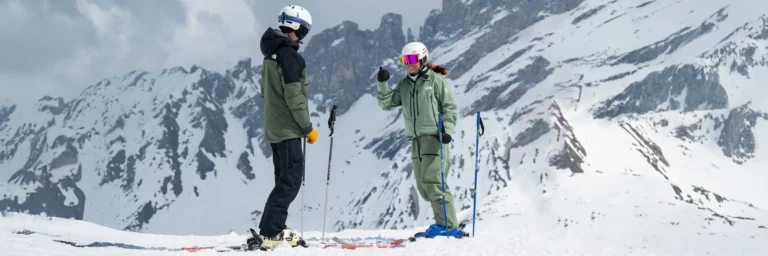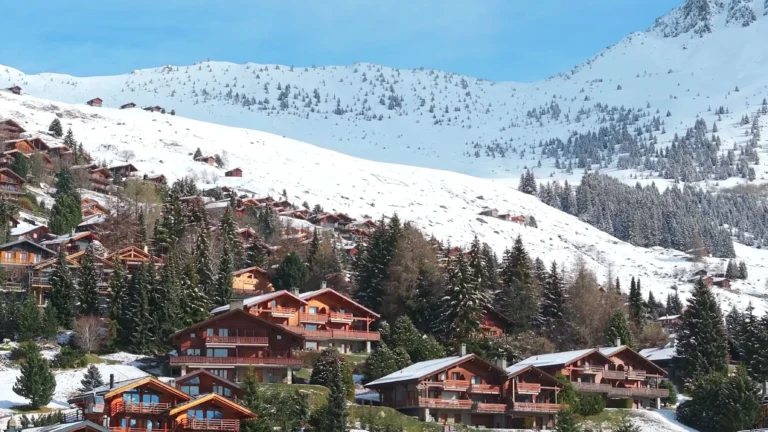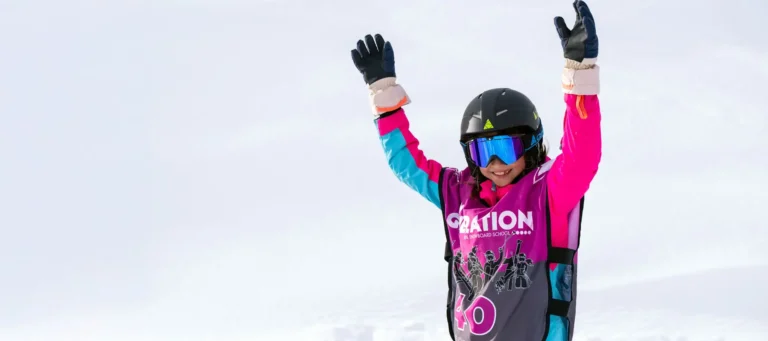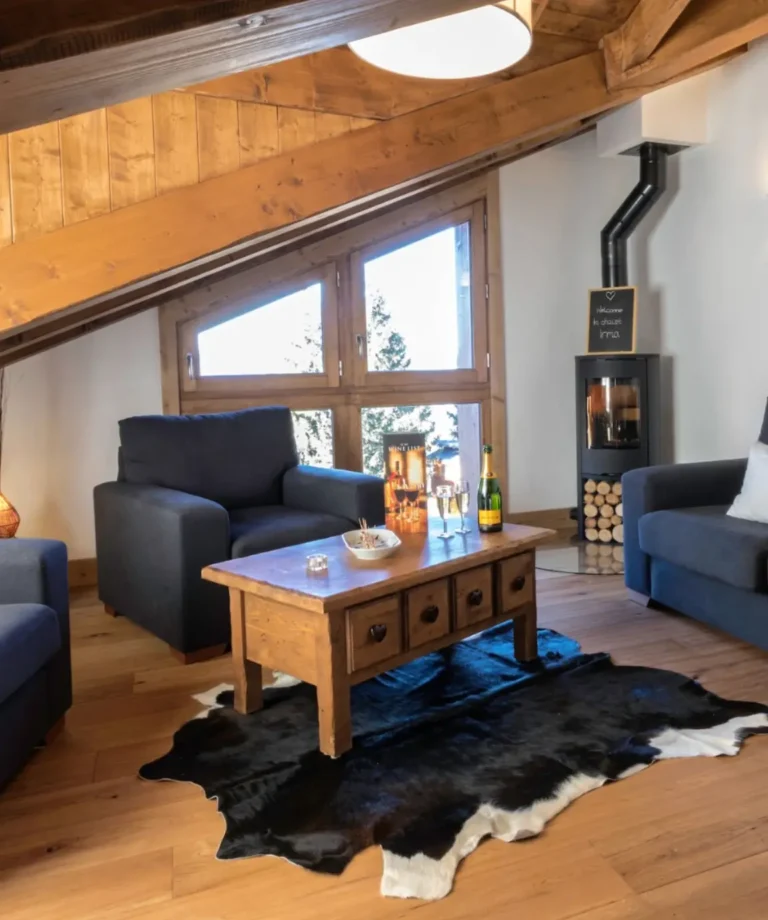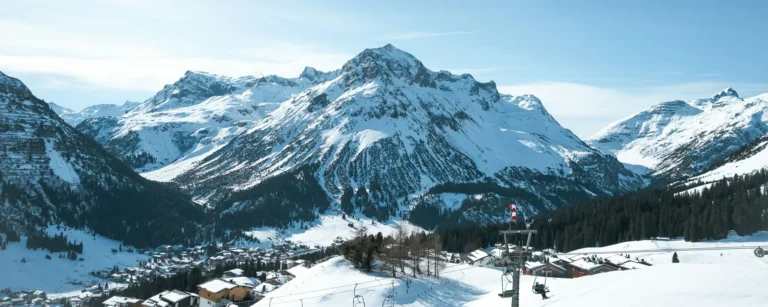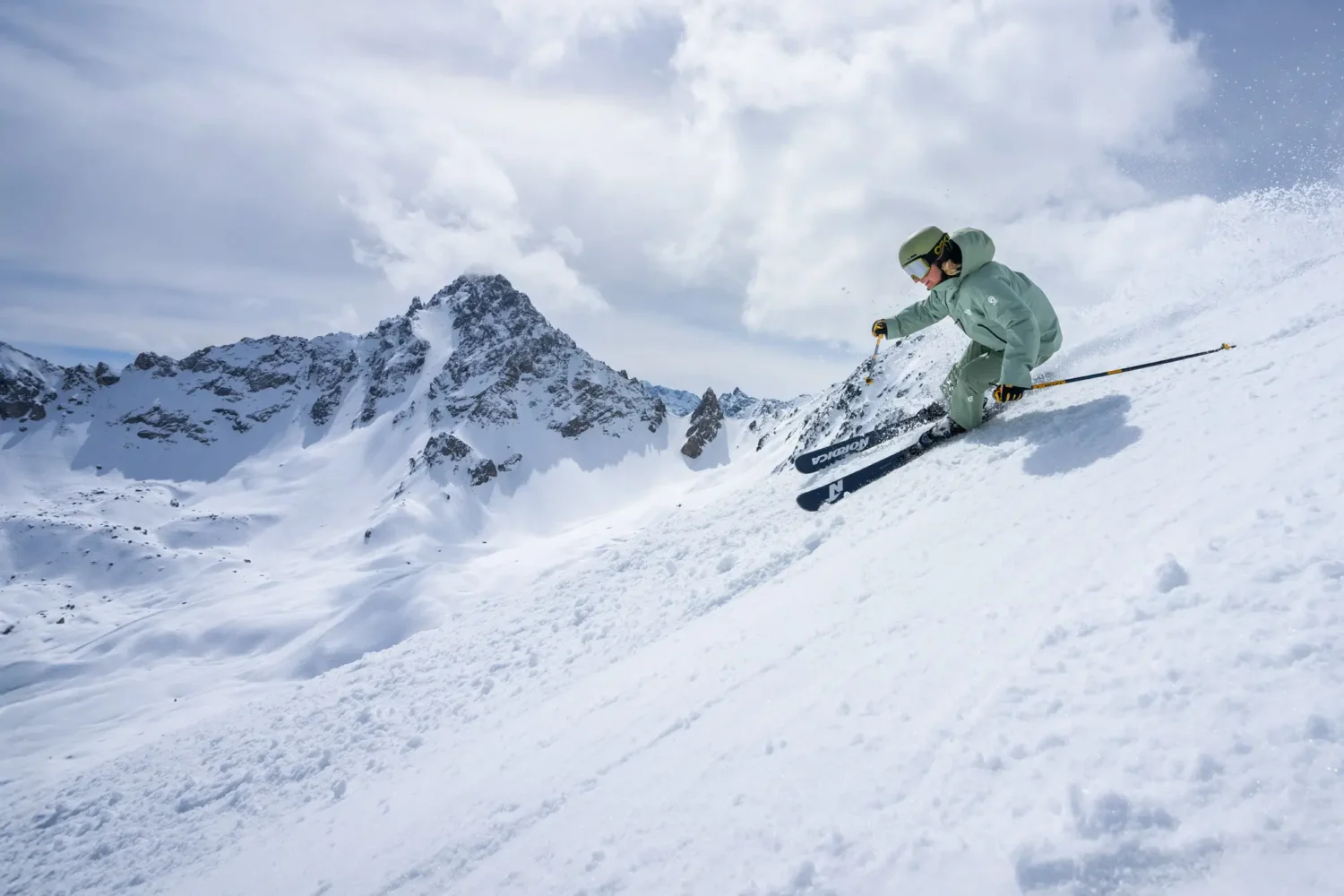Preparing for your next ski trip – or training to become a ski instructor – starts long before you pull on your boots. To truly experience the slopes, you need more than enthusiasm. You need ski fit exercises that build strength, endurance, agility, and resilience. Whether you’re a weekend warrior or aiming for instructor-level conditioning, this guide covers the comprehensive fitness plan you need.
Why Ski Fit Exercises Are Essential for Peak Performance
The Hidden Cost of Skiing Unprepared
Hitting the slopes without the right physical preparation can be dangerous. Fatigue, soreness, and delayed reaction times increase the risk of injury and can quickly turn a dream ski trip into a painful setback.
The benefits of doing exercises for skiing fitness particularly go far beyond performance. A consistent ski fit workout improves not only muscular strength and cardiovascular endurance but also boosts your coordination, flexibility, and mental resilience.
Training regularly can help reduce stress, sharpen focus, and increase your overall sense of well-being – all of which translate into more confidence and enjoyment on the mountain.
But here’s the catch: the only thing worse than not being ski-fit for a day on the slopes is getting injured while trying to get ski-fit! That’s why it’s essential to approach your ski training with a structured, safe, and progressive ski fitness training plan. Rushing into intense workouts without proper technique or recovery can lead to burnout, joint strain, or worse.
The best ski fitness exercises help you to have confidence that you’ll arrive at the slopes strong, energised, and mentally ready to make the most of your time in the mountains.
How Ski Fitness Prevents Common Slope Injuries
Most ski injuries involve the knees, hips, and lower back. The most common ski injuries are:
- Anterior cruciate ligament (ACL) rupture or sprain
- Medial collateral ligament (MCL) rupture or sprain
- Shoulder sprains, fractures and dislocations
- Wrist and thumb fractures
- Head injuries, whiplash and concussion
- Torn rotator cuff
Strong muscles act as stabilisers, protecting joints from strain and shock. Skiing exercises condition the body to absorb impact, maintain alignment, and quickly recover balance.
When to Start Your Ski Training Program
Ideally, start 6-8 weeks before your ski trip, but even a focused 4-week program can help. For optimal results, integrate strength, cardio, and flexibility training at least 3–5 times weekly.
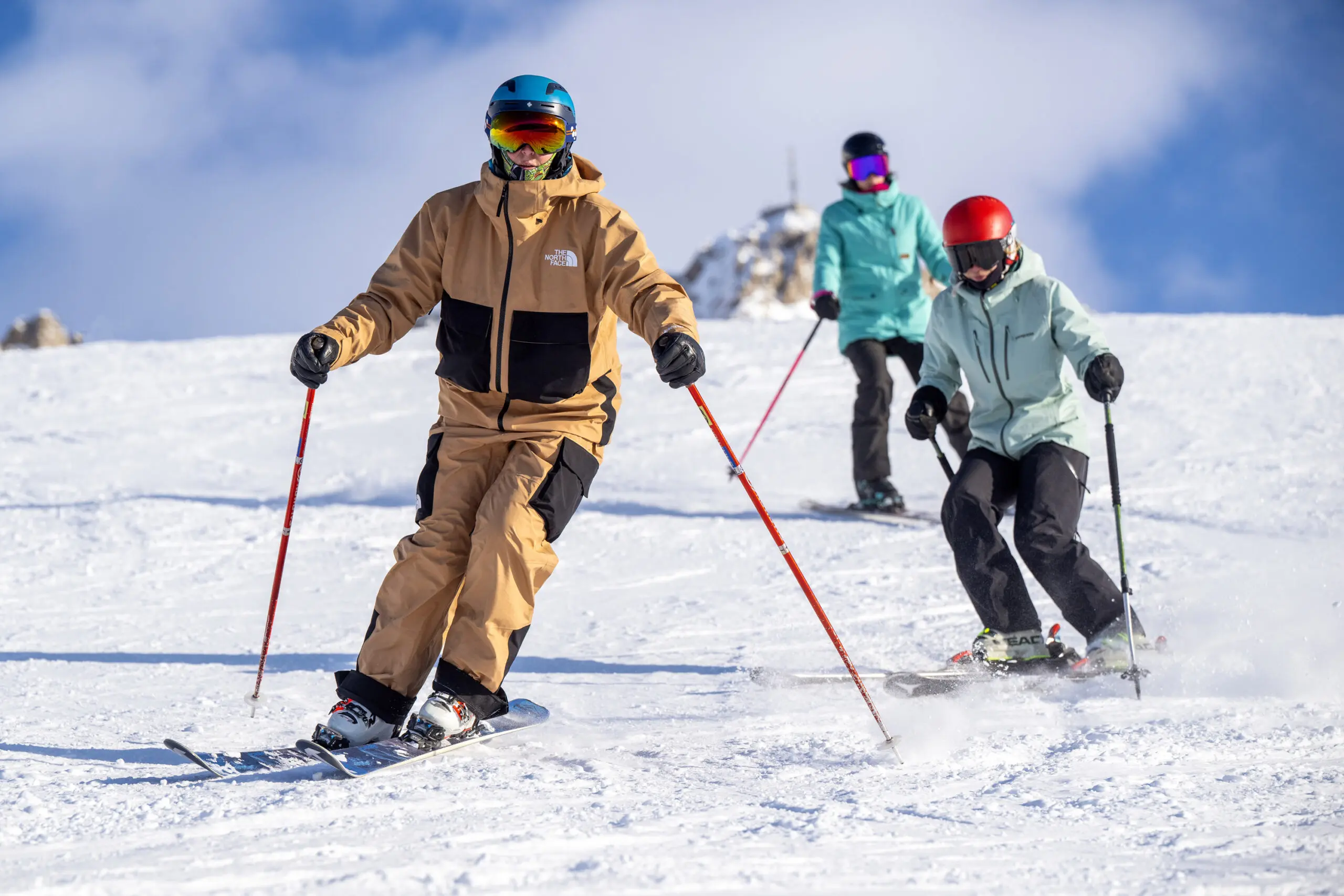
The Science Behind Ski Fitness: Which Muscles Need Training
- Quadriceps and Hamstrings: Your Skiing Powerhouse. These muscles handle descents, maintain your skiing stance, and control turns. Building endurance and strength here is crucial.
- Core Stability for Balance and Control. Your core connects your upper body and lower body, supporting spinal alignment and rotational strength essential for carving.
- Glutes and Hip Strength for Explosive Turns. Strong glutes help you stabilise through twists, drive turns, and absorb landings.
- Cardiovascular Endurance for All-Day Skiing. Skiing at altitude requires efficient oxygen use. Training your heart and lungs increases stamina and helps reduce fatigue at high elevations.
Essential Lower Body Ski Fit Exercises
| Exercise Category | Exercise Name | Primary Benefits |
| Lower Body | Wall Sits and Ski Squats | Mimic the ski shape stance to condition quads and build isometric strength |
| Lower Body | Jump Squats | Engage glutes and hamstrings while improving power for dynamic turns and jumps (bend your knees slowly at first to avoid injury) |
| Lower Body | Lateral Lunges | Train balance and strength in the frontal plane to better handle uneven terrain |
| Lower Body | Single-Leg Romanian Deadlifts | Boost hamstring flexibility and single-leg balance – a must for ski stability |
| Lower Body | Curtsy Lunges | Open up your hips and improve rotational stability, which is essential for carving |
| Core Strengthening | Plank Variations | Front, side, and dynamic planks strengthen the entire core chain |
| Core Strengthening | Russian Twists | Replicates the torso movement used during turns |
| Core Strengthening | Side Planks with Leg Lifts | Targets obliques and hip abductors for superior lateral stability and straight line prowess |
| Core Strengthening | Mountain Climbers | Improves cardiovascular fitness and reactive core strength |
| Core Strengthening | Bird Dogs | Enhances spinal control and balance under dynamic movement |
| Balance and Agility | Single Right and Left Leg Balance Challenges | Improves proprioception and neuromuscular response |
| Balance and Agility | Bosu Ball Exercises (Or Alternatives) | Train under instability to mimic ski terrain unpredictability |
| Balance and Agility | Lateral Bounds and Skater Hops | Enhances explosive side-to-side power and mimics ski transitions |
| Balance and Agility | Balance Board Training | Adds a challenge to balance drills for experienced skiers |
| Cardiovascular Endurance | High-Intensity Interval Training | Builds stamina, burns fat, and mimics skiing’s stop-start rhythm |
| Cardiovascular Endurance | Burpees and Full-Body Movements | Increase cardiovascular output while developing full-body strength (make sure your burpee involves you flat on the floor!) |
| Cardiovascular Endurance | Stair Climbing and Step-Ups | Simulates uphill exertion and strengthens glutes and quads |
| Cardiovascular Endurance | Building Altitude Tolerance | Use masks or train at elevation when possible to prepare your lungs |
Your Complete 4-Week Ski Fitness Program
This comprehensive program is designed to get you mountain-ready in just four weeks, focusing on the key areas that matter most for a safe and brilliant skiing holiday: leg strength, core stability, balance, and cardiovascular endurance.
The program progressively builds your fitness while targeting the specific muscle groups and movement patterns you’ll use on the slopes. Whether you’re a beginner hitting the bunny slopes or an advanced skier tackling black diamonds, this structured approach will help you ski stronger, longer, and with better control.
Week 1-2: Building Your Foundation
The first two weeks focus on establishing proper movement patterns and building base-level strength and endurance. During this foundation phase, you’ll perform exercises at moderate intensity with higher repetitions to develop muscular endurance and teach your body the correct form.
This period is crucial for preparing your joints, tendons, and muscles for the more intense training to come. Expect to feel some muscle soreness as your body adapts, but avoid pushing through sharp pain or discomfort.
Week 3-4: Intensifying for Peak Performance
Weeks three and four ramp up the intensity with explosive movements, advanced balance challenges, and sport-specific drills that closely mimic skiing demands. You’ll incorporate plyometric exercises, increase resistance, and add complexity to balance training to maximise power output and reaction time.
This phase prepares your neuromuscular system for the quick reflexes and dynamic movements required on challenging terrain. The workouts become more demanding, but your improved fitness foundation will help you handle the increased load.
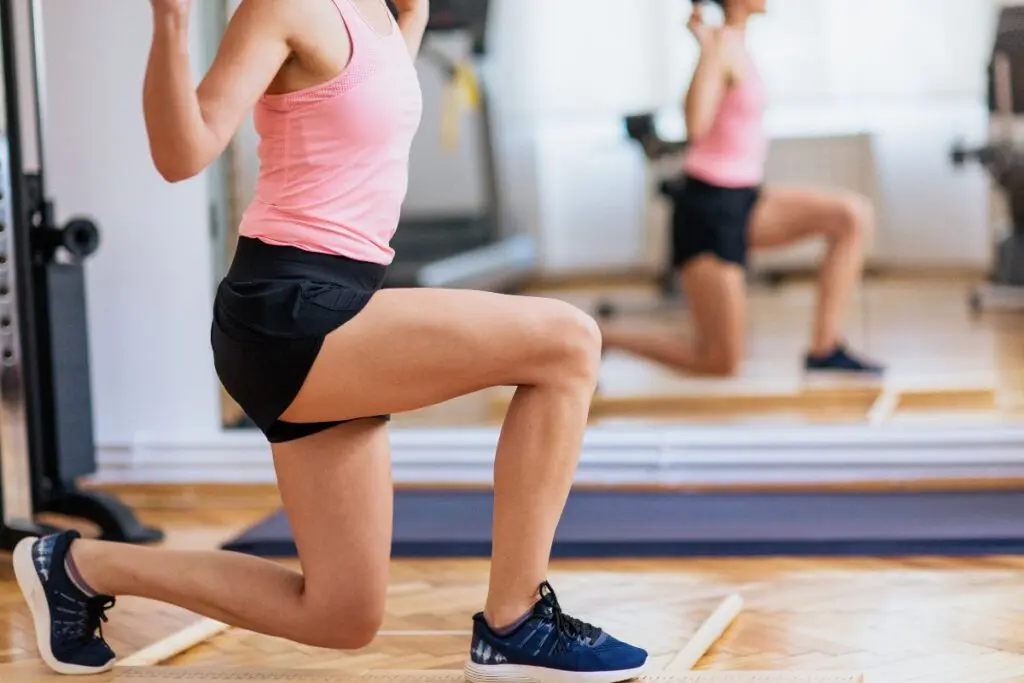
Daily Workout Schedule and Progression
Plan to train 4-5 times per week, alternating between strength-focused days and cardio/agility sessions to allow for proper recovery. Each workout should last 45-60 minutes, including a proper warm-up and cool-down period. Structure your week with 2-3 strength training sessions, 1-2 cardio sessions, and at least one dedicated balance/agility day.
Top Tip: Track your progress by recording repetitions, duration, and intensity levels, gradually increasing the challenge as your fitness improves throughout the four weeks.
How to Modify Exercises for Your Fitness Level
Listen to your body and scale back if you experience joint pain or excessive fatigue, as consistency over four weeks is more important than individual workout intensity.
- Beginners should start with bodyweight versions of all exercises, focus on proper form over speed, and take longer rest periods between sets.
- Intermediate athletes can add light weights, increase repetition speed, and incorporate instability tools like balance boards.
- Advanced fitness enthusiasts should use heavier resistance, add plyometric variations, and combine multiple movement patterns into complex exercises.
Advanced Ski Fit Exercises for Peak Performance
| Exercise Type | Specific Exercise | Primary Target | Performance Benefit | Training Protocol |
| Plyometric Training | Box Jumps | Quads, Glutes, Calves | Explosive power for advanced turns | 3 sets x 8-12 reps |
| Plyometric Training | Tuck Jumps | Hip Flexors, Core, Legs | Rapid knee-to-chest movement | 3 sets x 6-10 reps |
| Plyometric Training | Lateral Bounds | Glutes, Outer Thighs | Side-to-side power transfer | 3 sets x 8 each direction |
| Unilateral Training | Single-Leg Squats | Quads, Glutes, Stabilisers | Real-world skiing balance | 3 sets x 5-8 each leg |
| Unilateral Training | Weighted Single-Leg RDL | Hamstrings, Glutes, Core | Downhill control strength | 3 sets x 8-12 each leg |
| Unilateral Training | Bulgarian Split Squats | Quads, Glutes, Hip Flexors | Independent leg strength | 3 sets x 10-15 each leg |
| Sport-Specific Patterns | Mini-Band Lateral Walks | Hip Abductors, Glutes | Edge control stability | 3 sets x 15-20 steps |
| Sport-Specific Patterns | Slider Mountain Climbers | Core, Hip Flexors | Dynamic ski position | 3 sets x 20-30 seconds |
| Sport-Specific Patterns | Ski Simulator Movements | Full Body, Core | Actual skiing motion | 3 sets x 30-60 seconds |
Plyometric Training for Advanced Turns
Plyometric ski fit exercises develop the explosive power needed for dynamic skiing manoeuvres and advanced turn initiation.
- Box jumps build vertical power for mogul absorption and aggressive terrain navigation, requiring you to stand with your feet level, then jump onto a 20-24 inch platform with both left foot and right foot landing simultaneously.
- Tuck jumps enhance rapid knee-to-chest flexion that mimics the absorption phase of skiing bumps and steep terrain.
- Lateral bounds specifically target the side-to-side power transfer essential for carved turns and quick edge changes, training your body to generate force in the frontal plane where most skiing occurs.
Unilateral Training for Real-World Skiing
- Single-leg ski fit exercises address the reality that skiing requires independent leg strength and control, as each leg often bears different loads during turns.
- Weighted single-leg Romanian deadlifts develop the posterior chain strength needed for controlling speed on steep descents while maintaining balance.
- Bulgarian split squats create the quad and glute strength necessary for maintaining ski position during long runs.
- Single-leg squats challenge your stabilising muscles and proprioception, directly translating to better balance and control on variable terrain and conditions.
Sport-Specific Movement Patterns
Advanced ski fit exercises using specialised equipment replicate the exact movement patterns and muscle activation sequences used in skiing.
- Mini-band lateral walks strengthen the hip abductors and glutes that control edge pressure and prevent knee valgus during turns.
- Slider mountain climbers on furniture sliders or Valslides train the dynamic strong core stability and hip flexor strength needed for aggressive skiing positions.
- Ski simulators or balance boards with rotational movements pattern the exact neuromuscular coordination required for linking turns and maintaining flow down the mountain.
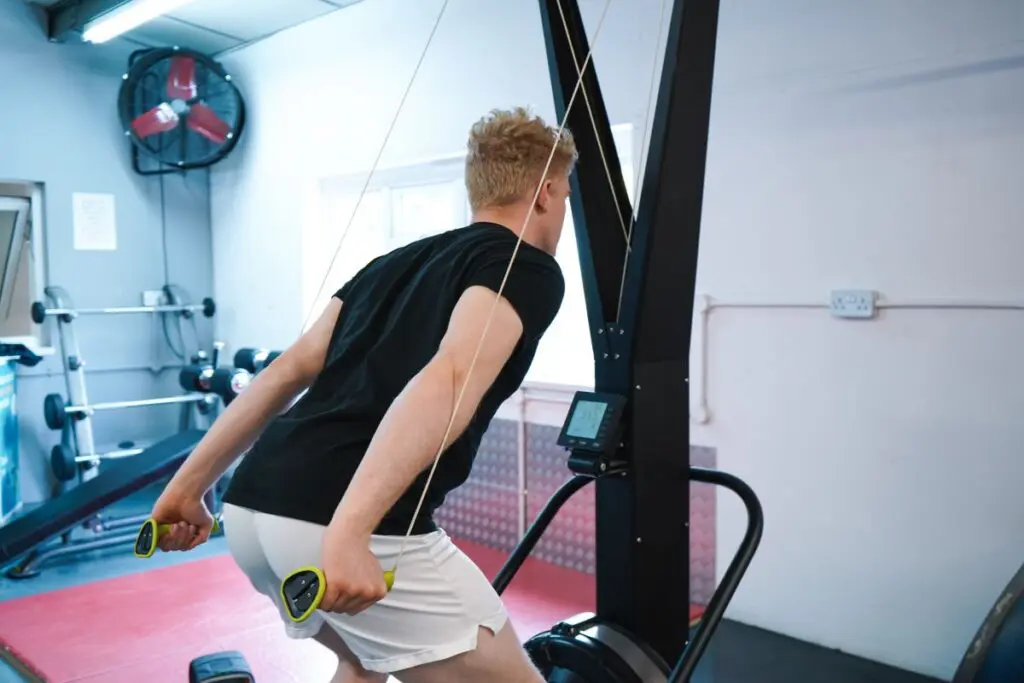
Pre-Season Peak Training Protocol
The final phase of ski workouts involves strategic periodisation to maximise performance while ensuring recovery before your ski trip.
Begin tapering training volume 1-2 weeks before departure, reducing workout frequency from 5-6 sessions to 3-4 sessions per week while maintaining exercise intensity. Focus on movement quality, activation exercises, and light plyometric work to keep your nervous system sharp without accumulating fatigue.
This pre-season protocol ensures your body is primed for peak performance rather than depleted from overtraining, allowing you to ski at your highest level from day one of your mountain adventure.
Common Ski Fitness Mistakes to Avoid
Overtraining Before Your Ski Trip
One of the biggest mistakes is ramping up intensity in the final week before your ski vacation, thinking more training equals better performance. Your body needs 7-10 days to recover from intense training sessions and adapt to the stress you’ve placed on it. Push too hard right before your trip, and you’ll arrive on the mountain with fatigued muscles, depleted energy stores, and increased injury risk instead of peak performance.
Neglecting Flexibility and Mobility
Many skiers focus exclusively on strength training while ignoring the mobility work that’s equally crucial for safe, efficient skiing. Tight hip flexors limit your ability to maintain proper ski stance, while restricted ankle mobility prevents effective edge control and weight transfer. Poor flexibility in these key areas not only restricts your movement patterns but also forces compensation patterns that significantly increase your risk of knee, hip, and back injuries on the slopes.
Focusing Only on Leg Strength
While strong quads and glutes are essential for skiing, neglecting core stability and balance training creates a weak foundation that limits your overall performance potential. Your core acts as the power transfer centre between your upper and lower body during turns, while balance training develops the proprioception needed for quick reactions on variable terrain. Skiers who only train their legs often struggle with technique, tire quickly, and lack the stability needed for challenging conditions.
Skipping the Warm-Up and Cool-Down
Jumping straight into intense ski fit exercises or hitting the slopes without proper preparation is a recipe for injury and poor performance. A dynamic warm-up increases blood flow, activates key muscle groups, and prepares your nervous system for the demands ahead. Similarly, neglecting post-workout or post-ski stretching and recovery work leads to increased muscle tension, delayed recovery, and reduced flexibility over time, ultimately limiting your progress and increasing injury risk.
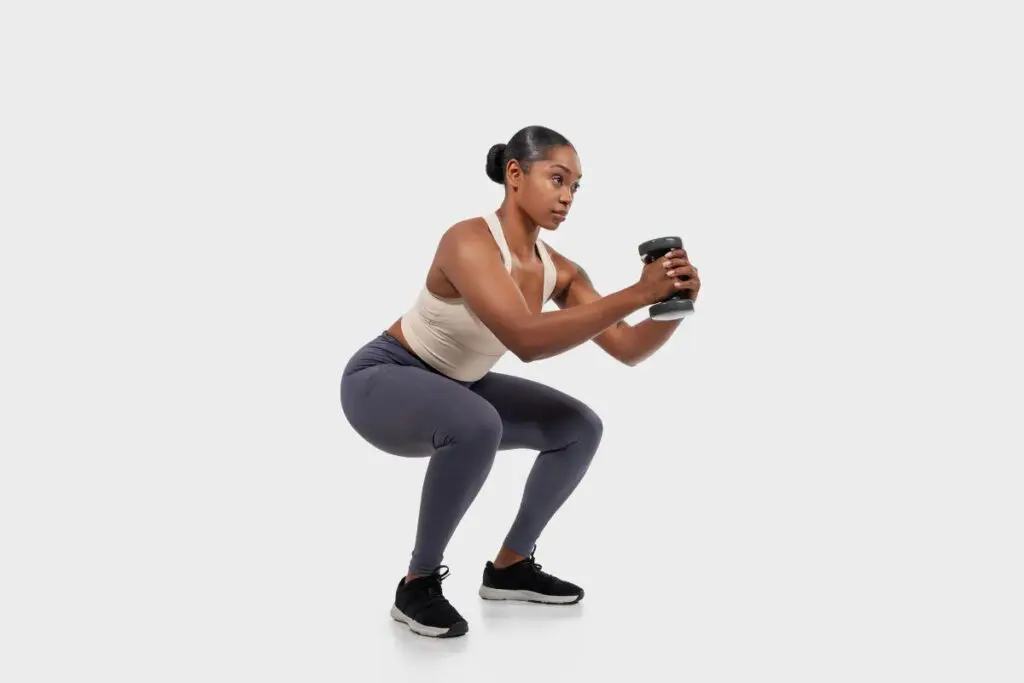
On-Mountain Preparation and Recovery
Essential Warm-Up Exercises Before Skiing
Include leg swings, bodyweight squats, lunges, and dynamic stretches.
Mid-Day Stretches to Prevent Fatigue
Focus on hamstring and hip flexor mobility during breaks.
Post-Ski Recovery and Stretching Routine
Incorporate foam rolling, yoga poses, and contrast showers.
Maintaining Fitness Throughout Ski Season
Stick with 2–3 short weekly sessions to retain strength and avoid deconditioning.
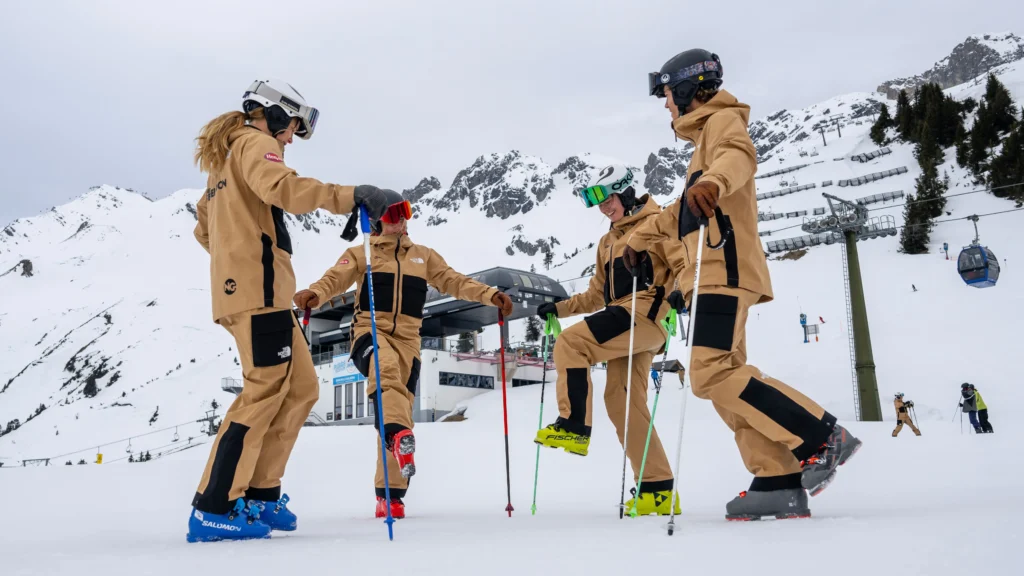
Conclusion
Achieving peak ski fitness doesn’t require a gym or expensive gear – just commitment and the right plan. These 18 ski fit exercises provide a complete approach to strength, endurance, balance, and recovery. Whether you’re chasing powder days or instructor certification, training smart off the mountain means skiing harder, longer, and safer on it.
Frequently Asked Questions – Ski Fit Exercises
Q: How long before my ski trip should I start doing ski fit exercises?
A: Ideally, start 6–8 weeks before your trip, but even 2–4 weeks of focused training can improve performance.
Q: Can I get ski fit without going to the gym?
A: Yes! Most ski fit workouts can be done at home using bodyweight, resistance bands, or basic equipment
Q: Do ski instructors have special fitness requirements?
A: Instructors need high levels of endurance, balance, and muscle control, especially for long days on the snow.
Q: What exercises do ski instructors recommend most?
A: Core stability (planks), leg endurance (wall sits), and balance drills (single-leg work) are highly recommended.
Q: How do ski instructors stay fit during the off-season?
A: Many focus on cross-training like cycling, hiking, and plyometrics to maintain all-round conditioning.
Q: Should beginners do the same ski fit exercises as advanced skiers?
A: The movement types are the same, but beginners should reduce volume and intensity until they build capacity.
Q: How often should I do ski fit exercises per week?
A: Aim for 3–5 sessions weekly, mixing strength, cardio, and flexibility.
Q: What’s the most important muscle group for skiing?
A: The quads, but core and glutes are equally important for control and injury prevention.
Q: What is the best exercise to get fit for skiing?
A: Wall sits mimic the ski stance and build essential leg endurance.
Q: How long does it take to get ski fit?
A: Most people can build noticeable ski fitness in 4–6 weeks with consistent training.
Q: Can I get ski fit in 2 weeks?
A: Yes -while limited, a focused 2-week plan can still improve endurance and strength noticeably.
